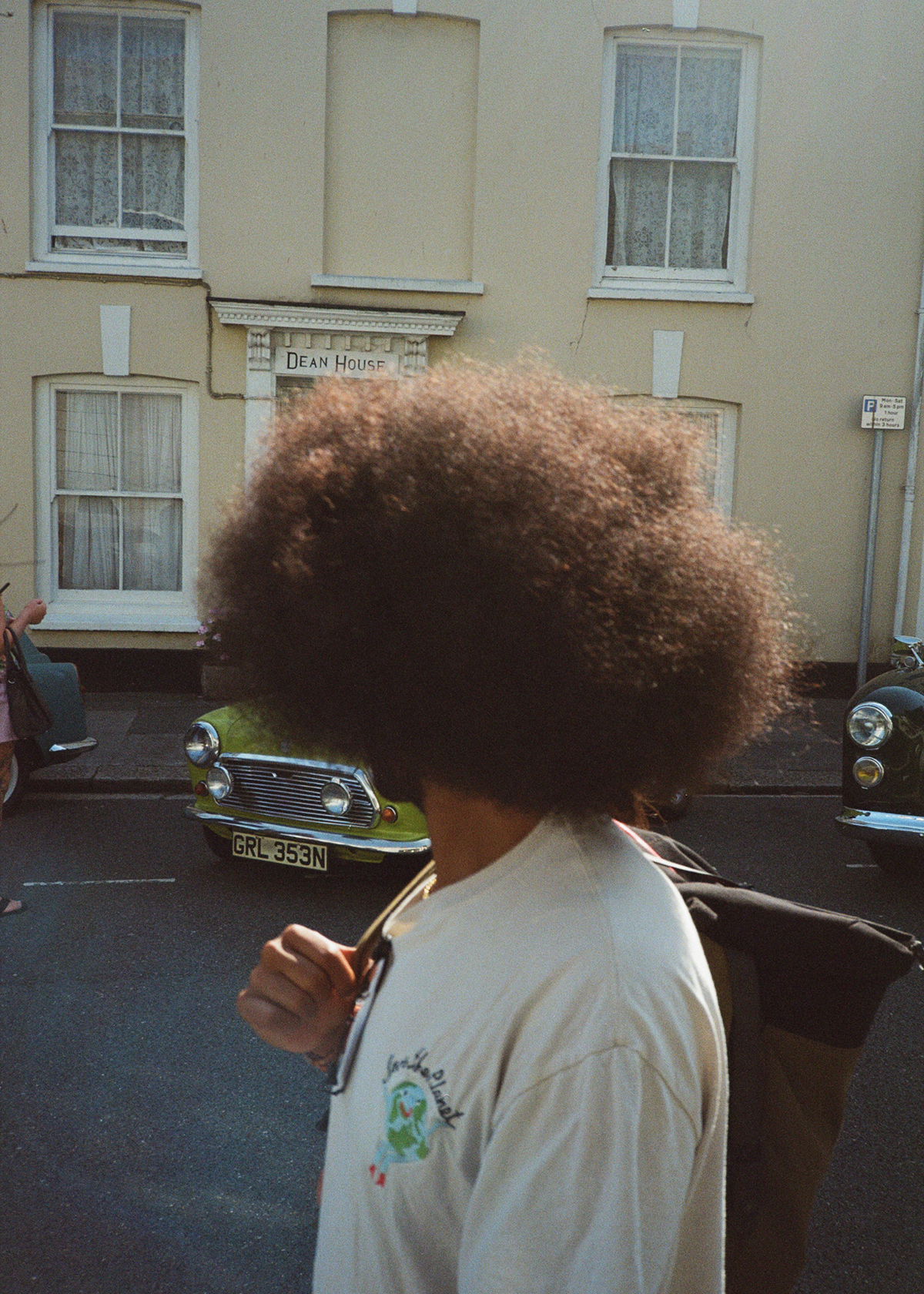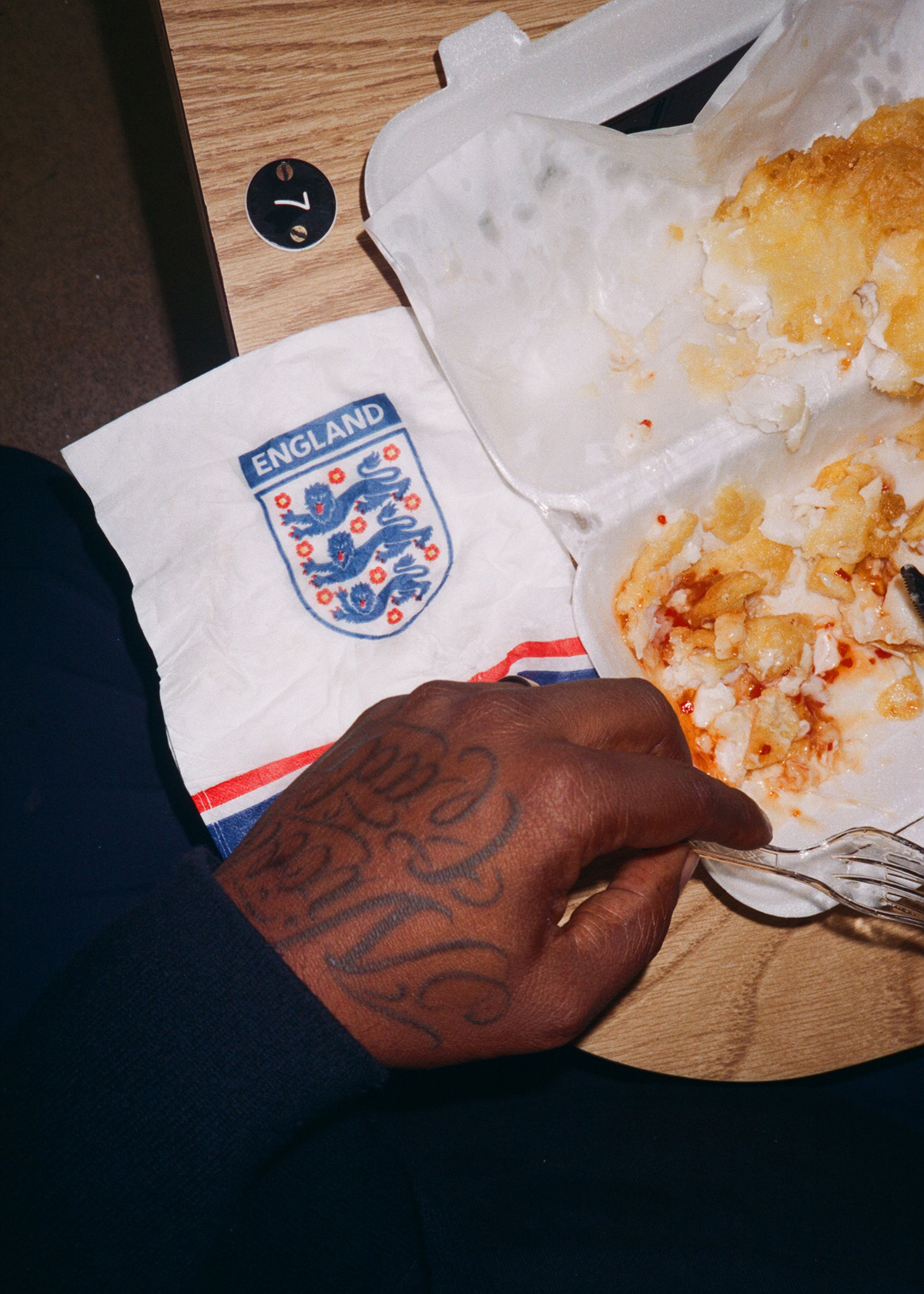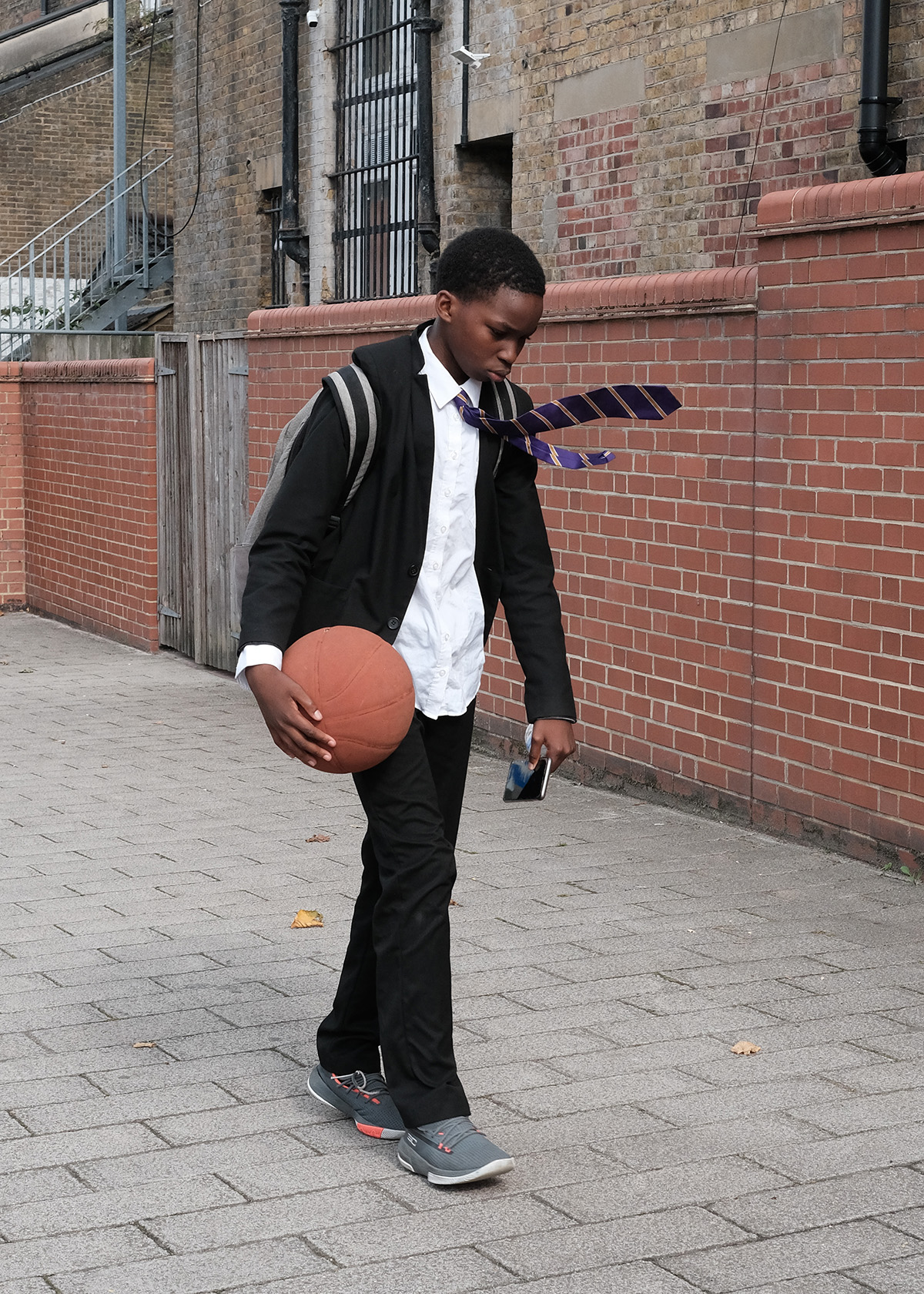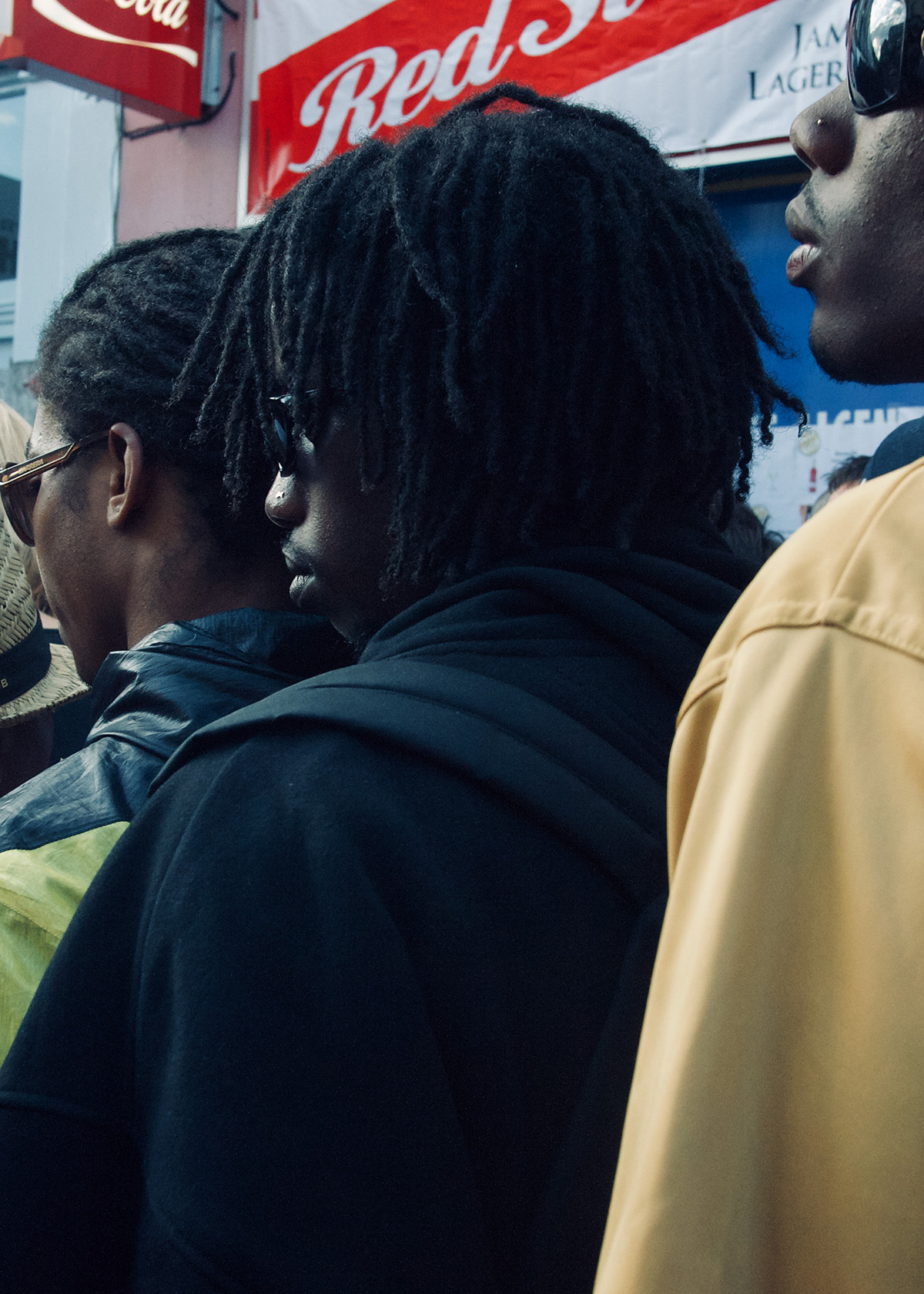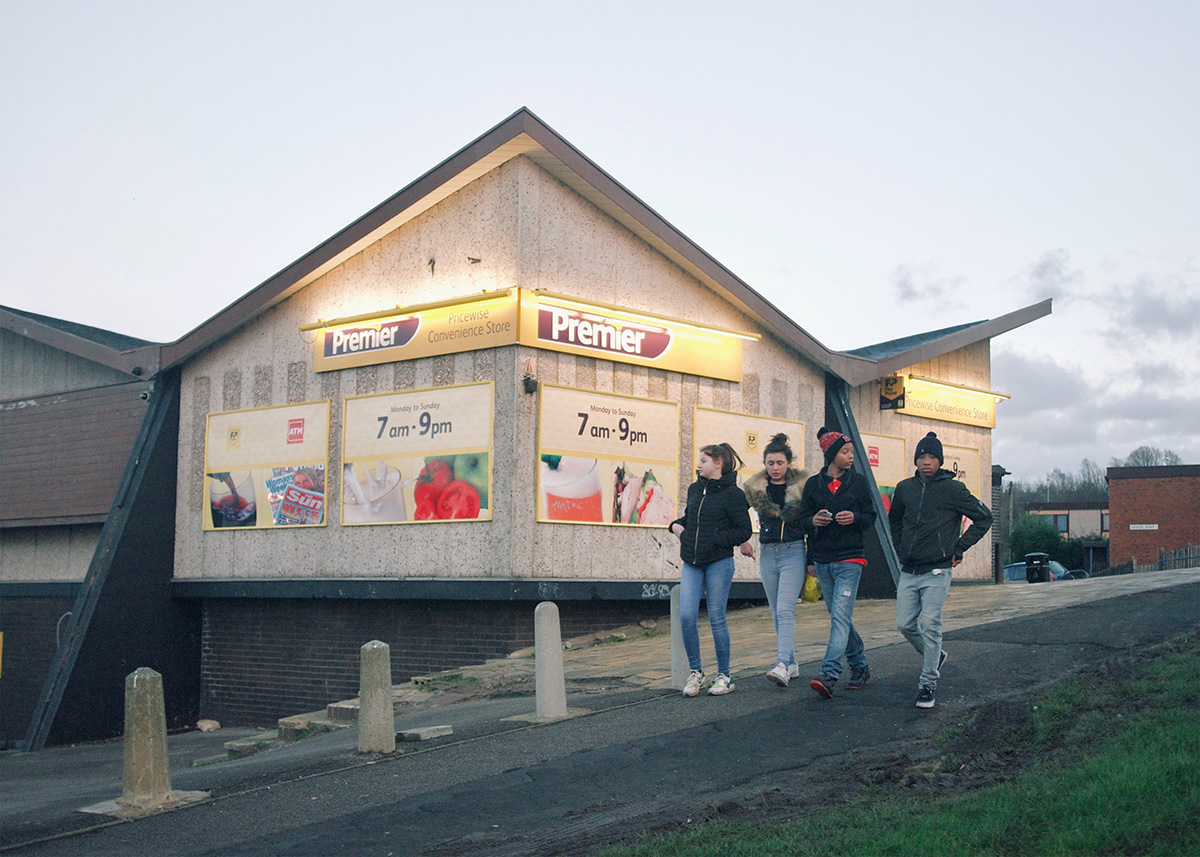All images © Johny Pitts.
Travelling with the poet Roger Robinson, Pitts draws on poetry, rhythm and intuition to resolve a candid image of the home
For his latest work, photographer, writer and radio presenter Johny Pitts drove around the British coastline with poet Roger Robinson. The two distil their journey into a book of expressionist visuals and poignant texts which reflect their observations of contemporary Black British culture. Home is Not a Place, published by Harper Collins, mixes different series and timelines, and functions as an extension of Pitts’ last book, Afropean (Allen Lane/Penguin, 2019). The everyday Black experience is foregrounded – throwaway moments, small gestures – in a way that reframes what is worthy of documenting and appreciating. The visual selection was a collaborative exercise with the photographer’s publishing team and network of friends, including Photoworks director and next Director of The Photographer’s Gallery, Shoair Mavlian, and photographer Eddie Otchere.
The result has “this dreamy element”, Pitts says from his studio in Peckham, London. “I was inspired by Roger trying to make images with his poetry – I was trying to make poetry with my images.” That poetic quest was underpinned by a wilful embrace of flaws and championing a less-polished aesthetic. Pitts equates this approach with the B-sides of music tapes and vinyl, namely creating less prescriptive alternatives to standardised hits.
The sequencing of Robinson’s texts was inspired by off-kilter hip-hop and dub rhythms intrinsic to Black creative expression, and the visual tempo conveys a restlessness that matches the duo’s roving mission. While exploring the country and the regional specificities affecting Black communities, Pitts recalled Paul Graham’s A1: The Great North Road (Mack, 1983), in which Graham uses the main road artery bisecting the country as a documentary thread. “We needed to get out of London, because that’s the story that keeps getting told,” Pitts remarks. Instead, “You have the story of the empire: places like Plymouth and Bristol, where we saw the toppling of the [Edward] Colston statue. You have Liverpool, which was involved in the transatlantic slave trade. Then you have places like Dover, which is opposite Calais, where you hear stories of new arrivals of asylum seekers drowning on that crossing, that kind of trauma.”
Pitts let the itinerary of the trip shape the narrative: “Sometimes there are images in the book that aren’t of much, but they capture an echo of history.” He cites George Orwell’s The Road to Wigan Pier (1937), in which the author examines the working-class experience, and sociologist Paul Gilroy, who is behind the book The Black Atlantic (1993) about the unregulated maritime space between land masses.
Pitts frames his project as a kind of antithesis to Henri Cartier-Bresson’s decisive moment, as narratives that come from focusing only on heightened moments do not represent quotidian experience. To Pitts, rethinking this skewed sense of what to immortalise is as pertinent to social history as it is to the vernacular family album. “Ultimately, we don’t spend our whole lives at weddings and holidays,” Pitts says, despite the fact that these are the moments many tend to chronicle.
During the Covid-19 lockdown, he made his own family’s archives into a revisionist project. “My mum – thank God! – kept every negative of every photograph I’ve ever taken. When I was looking through them, I thought, ‘This is where the interesting stuff is.’ One-off moments of success are important, too, but everyday moments tell you more about what life is really like for a community, for a family.”
“I wanted to create conditions under which a Black or working-class community could feel at home.”
“I keep everything,” Pitts laughs. “There’s so many terrible photographs in my archive. It’s about seven terabytes, and maybe only 3 per cent of it is usable. But it’s amazing how, as the years go by, I find new things. What I thought was a terrible image that just didn’t work, suddenly it’s like, ‘Actually, yeah.’ You see it in a new light.” As circumstances change, how one valorises images changes in tandem. Different stories can be extracted from the same materials, and one can re-evaluate what is considered worthy.
A companion exhibition to the book is on show at Graves Gallery in Sheffield – Pitts’ hometown – until 24 December, and will migrate to Stills in Edinburgh in spring 2023. The exhibition was commissioned by Photoworks for the inaugural Ampersand/Photoworks Fellowship. “I wanted to create conditions under which a Black or working-class community could feel at home,” Pitts says. “It’s important to take all these semiotic visuals and atmospheres and think, ‘How do I welcome people into this space?’” Pitts’ family helped bring the exhibition to life: his sister made a playlist from a local pirate radio station and a table for people to sit at, peppered with maps and family albums. His cousin constructed a model of Pitts’ childhood home; his niece and her friends helped with production. Creating a feeling of respite was important, and Pitts wants viewers to find resonance in his images beyond the artistic effort that brought them about. Appreciative visitors have contacted him to say: ‘I was looking through your family albums, and I remembered having wallpaper like that’. “Those little touches,” says Pitts, “mean everything to me.”
Home is Not a Place by Johny Pitts and Roger Robinson is published by Harper Collins
The exhibition by Johny Pitts, commissioned by Photoworks for the inaugural Ampersand/Photoworks Fellowship is exhibited at Graves Gallery, Sheffield Museums from 11 August – 24 December 2022 and Stills Gallery, Edinburgh 09 March – 10 June 2023.

